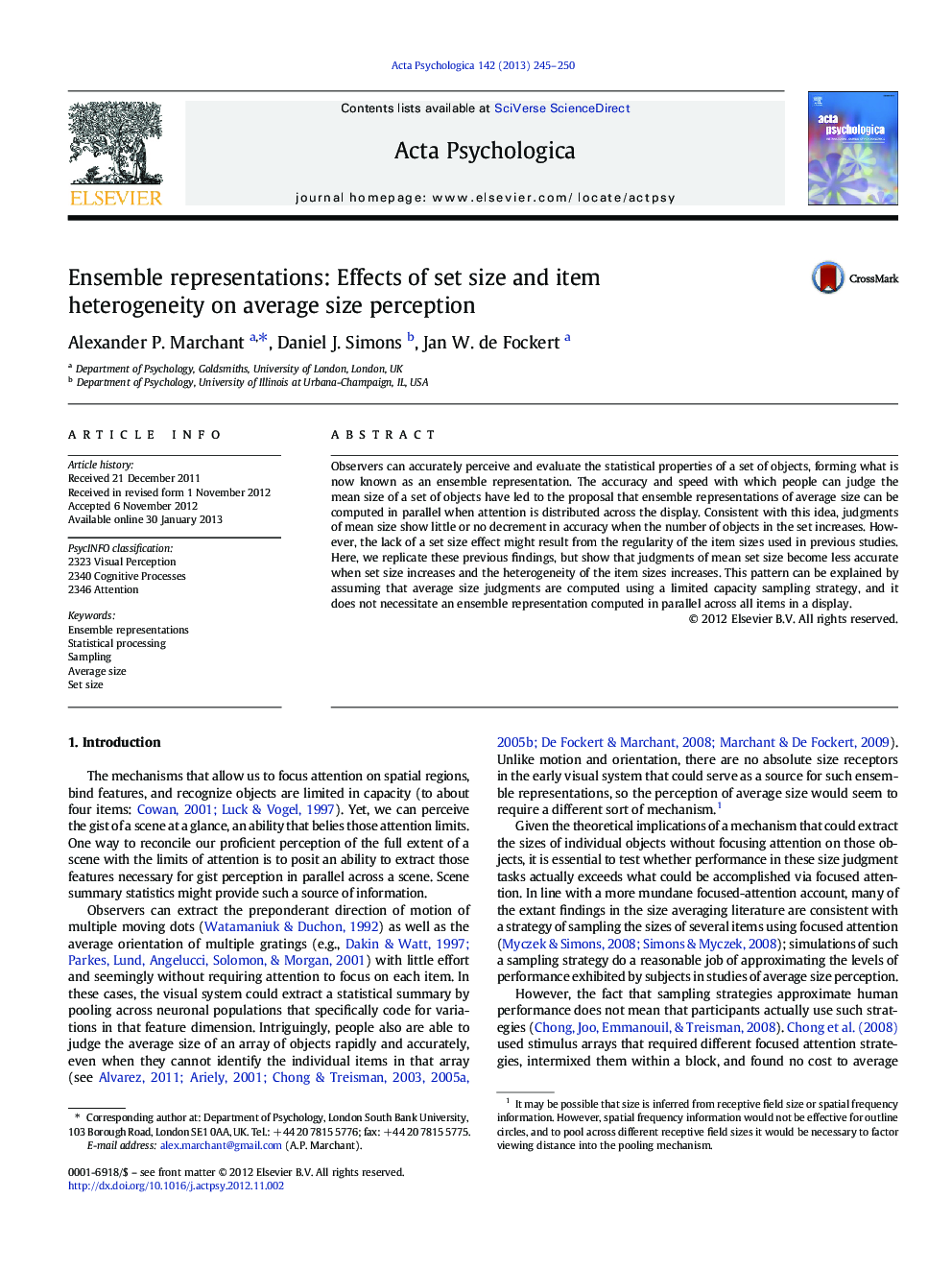| Article ID | Journal | Published Year | Pages | File Type |
|---|---|---|---|---|
| 919887 | Acta Psychologica | 2013 | 6 Pages |
Observers can accurately perceive and evaluate the statistical properties of a set of objects, forming what is now known as an ensemble representation. The accuracy and speed with which people can judge the mean size of a set of objects have led to the proposal that ensemble representations of average size can be computed in parallel when attention is distributed across the display. Consistent with this idea, judgments of mean size show little or no decrement in accuracy when the number of objects in the set increases. However, the lack of a set size effect might result from the regularity of the item sizes used in previous studies. Here, we replicate these previous findings, but show that judgments of mean set size become less accurate when set size increases and the heterogeneity of the item sizes increases. This pattern can be explained by assuming that average size judgments are computed using a limited capacity sampling strategy, and it does not necessitate an ensemble representation computed in parallel across all items in a display.
► Average set size was estimated using an adjustable probe. ► Sets varied in the number of items present (set size) and the regularity of the sizes. ► Replicating previous research, estimates for regular sets were unaffected by set size. ► However, estimates became less precise as set size increased and regularity decreased. ► The results support the averaging of a subset rather than the whole of the set.
